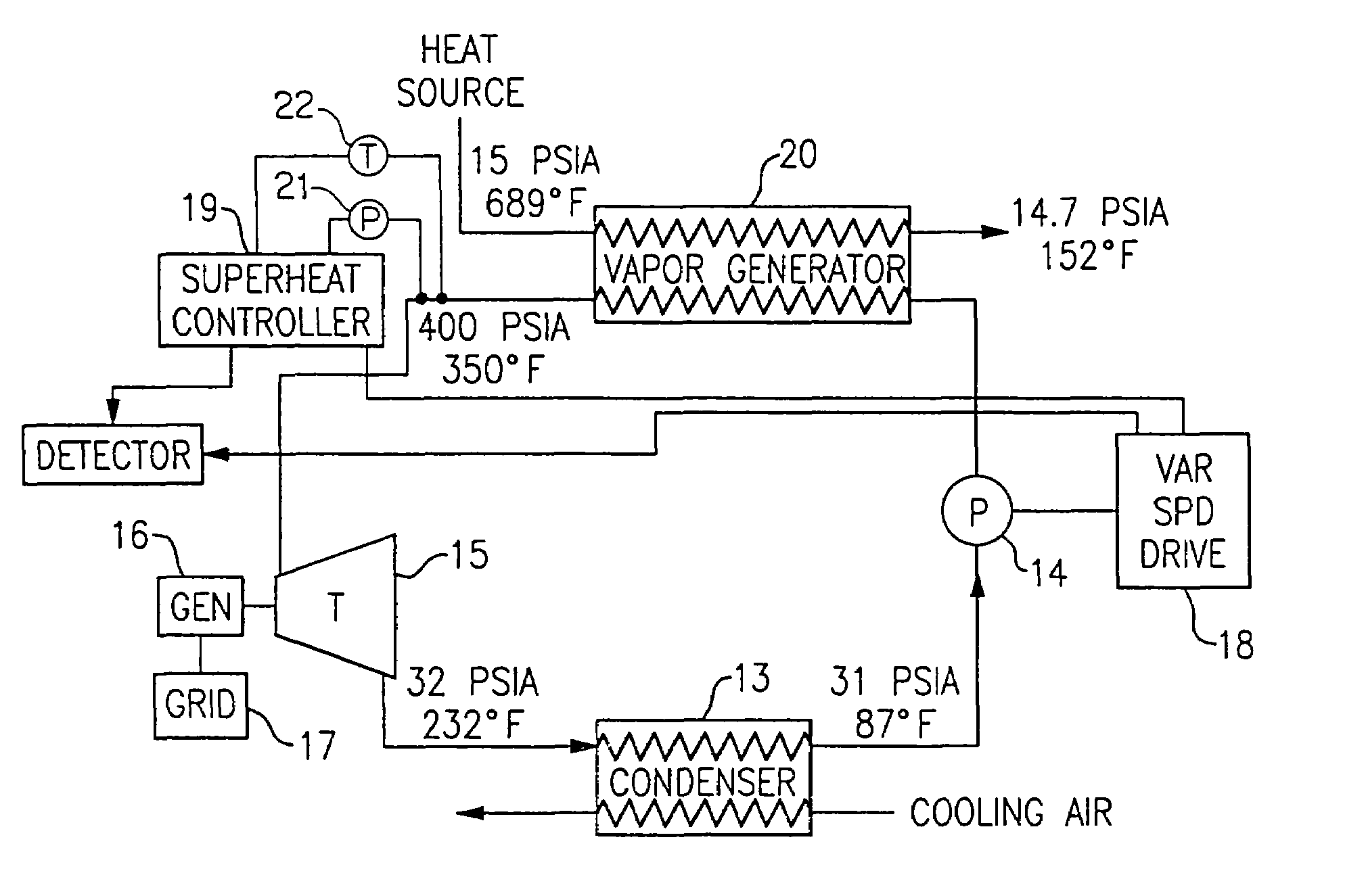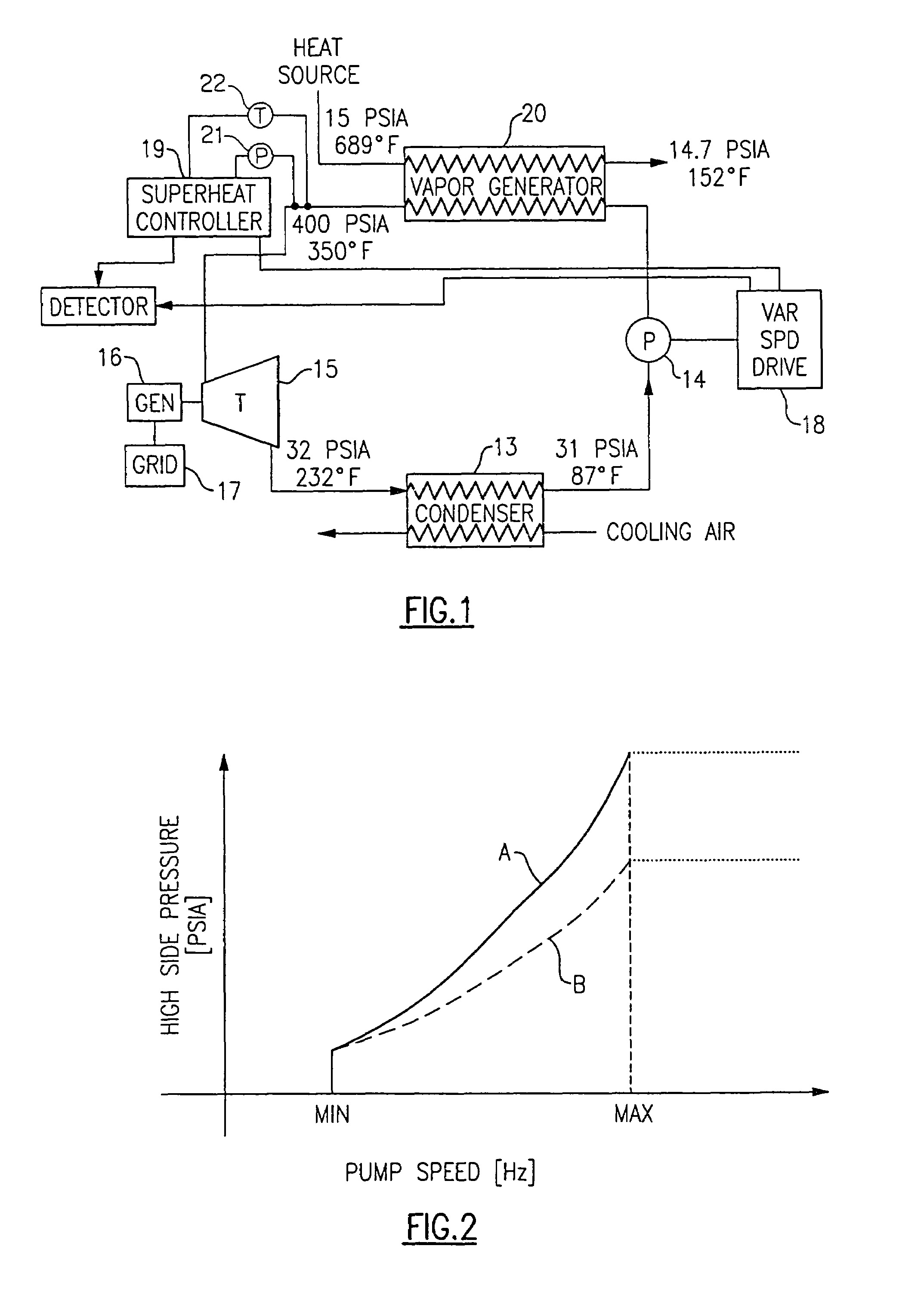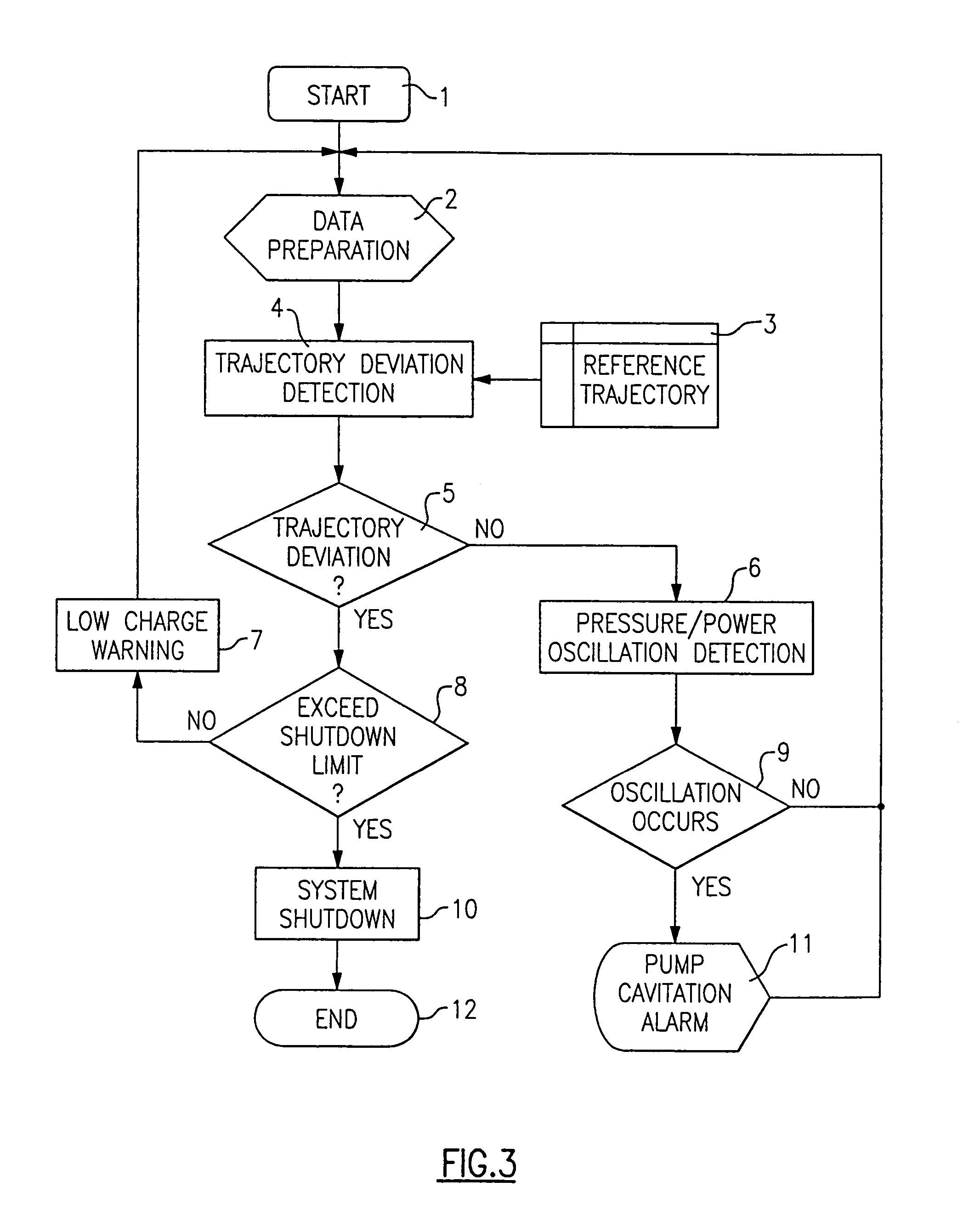Apparatus and method for detecting low charge of working fluid in a waste heat recovery system
a technology of working fluid and low charge, which is applied in the direction of liquid degasification, instruments, separation processes, etc., can solve the problems of low charge, reduced plant efficiency and reliability, and damage to the turbin
- Summary
- Abstract
- Description
- Claims
- Application Information
AI Technical Summary
Benefits of technology
Problems solved by technology
Method used
Image
Examples
Embodiment Construction
[0015]Referring now to FIG. 1, a waste heat recovery system is shown to include an organic rankine cycle (ORC) power plant that comprises, in serial flow relationship, a vapor generator 20, a turbine 15, a condenser 13, and a pump 14. The turbine 12 drives a generator 16 which generates power to be sent to a grid 17. The pump 14 is driven by a variable speed drive 18, with the speed thereof being controlled in a manner to be described more fully hereinafter.
[0016]Energy is provided to the ORC by way of the vapor generator 20, with the energy coming from a heat source which may otherwise transfer heat to the environment in the form of waste heat. An example of such a heat source is a mirco-turbine, with heat being given off at its exhaust and by its engine coolants. Typical pressures and temperatures are 15 psia and 689° F. for the fluid going into the vapor generator and 14.7 psia and 152° F. for the fluid being discharged from the vapor generator 20.
[0017]The working fluid being ci...
PUM
| Property | Measurement | Unit |
|---|---|---|
| temperatures | aaaaa | aaaaa |
| temperatures | aaaaa | aaaaa |
| temperatures | aaaaa | aaaaa |
Abstract
Description
Claims
Application Information
 Login to View More
Login to View More - R&D
- Intellectual Property
- Life Sciences
- Materials
- Tech Scout
- Unparalleled Data Quality
- Higher Quality Content
- 60% Fewer Hallucinations
Browse by: Latest US Patents, China's latest patents, Technical Efficacy Thesaurus, Application Domain, Technology Topic, Popular Technical Reports.
© 2025 PatSnap. All rights reserved.Legal|Privacy policy|Modern Slavery Act Transparency Statement|Sitemap|About US| Contact US: help@patsnap.com



